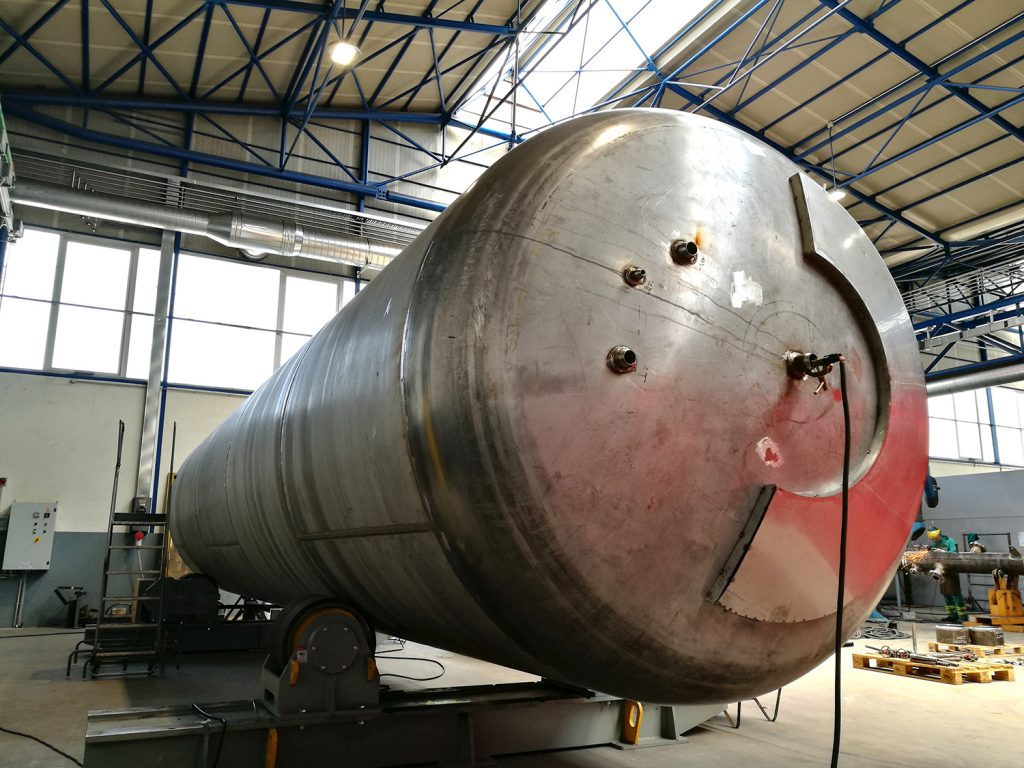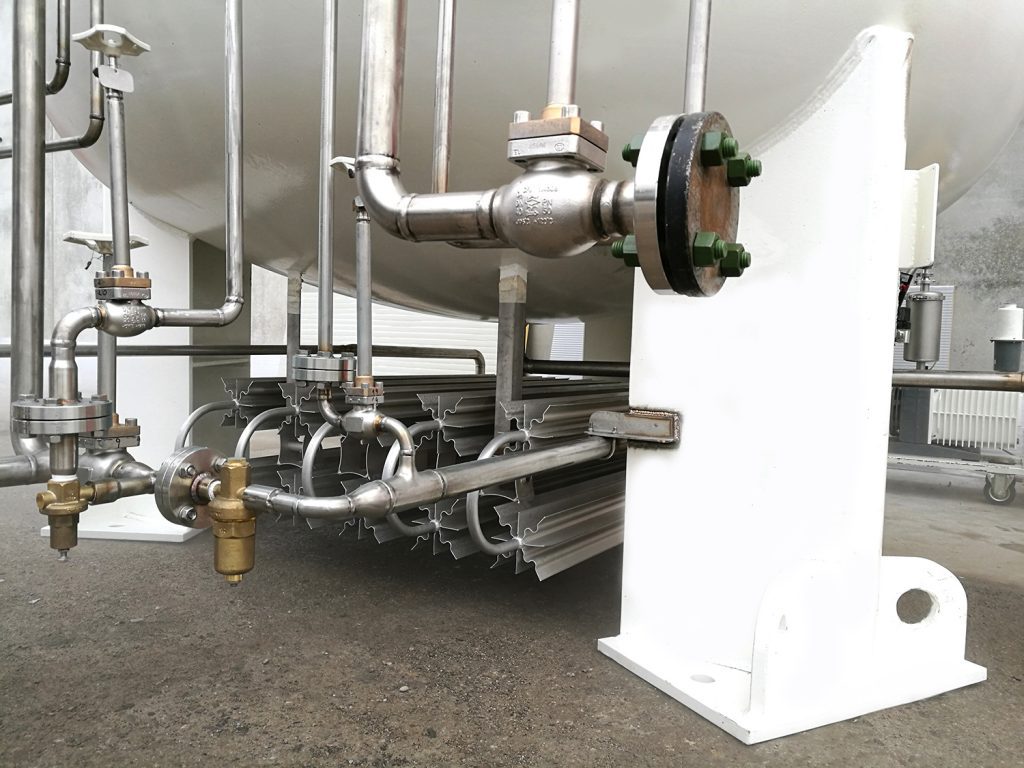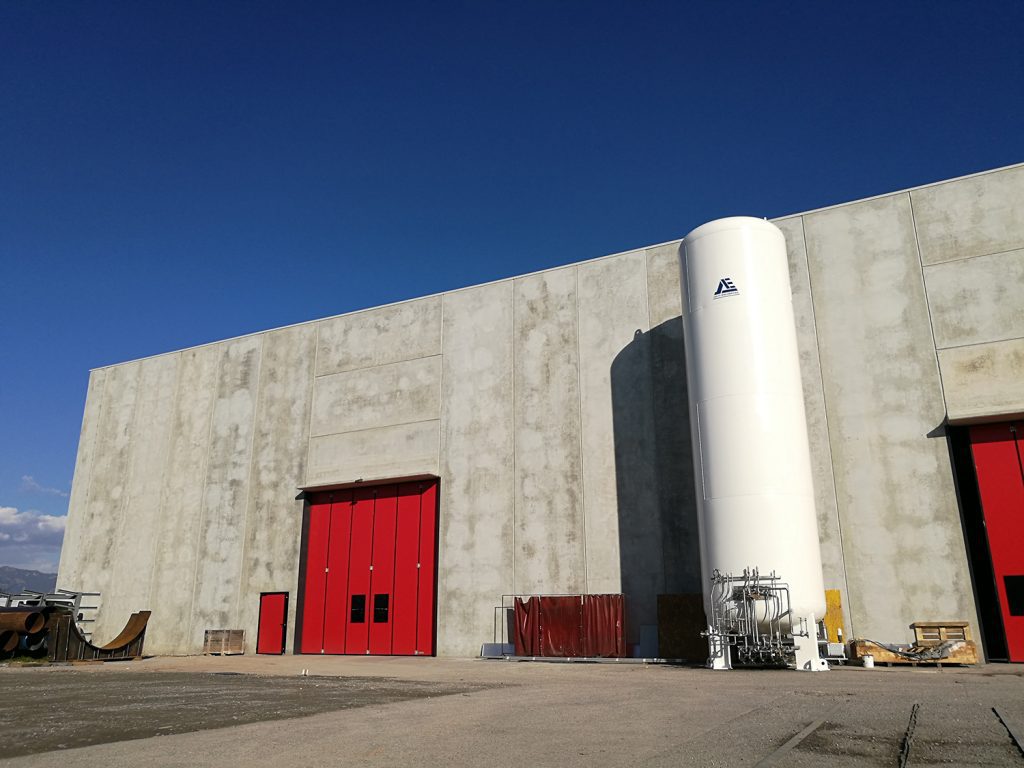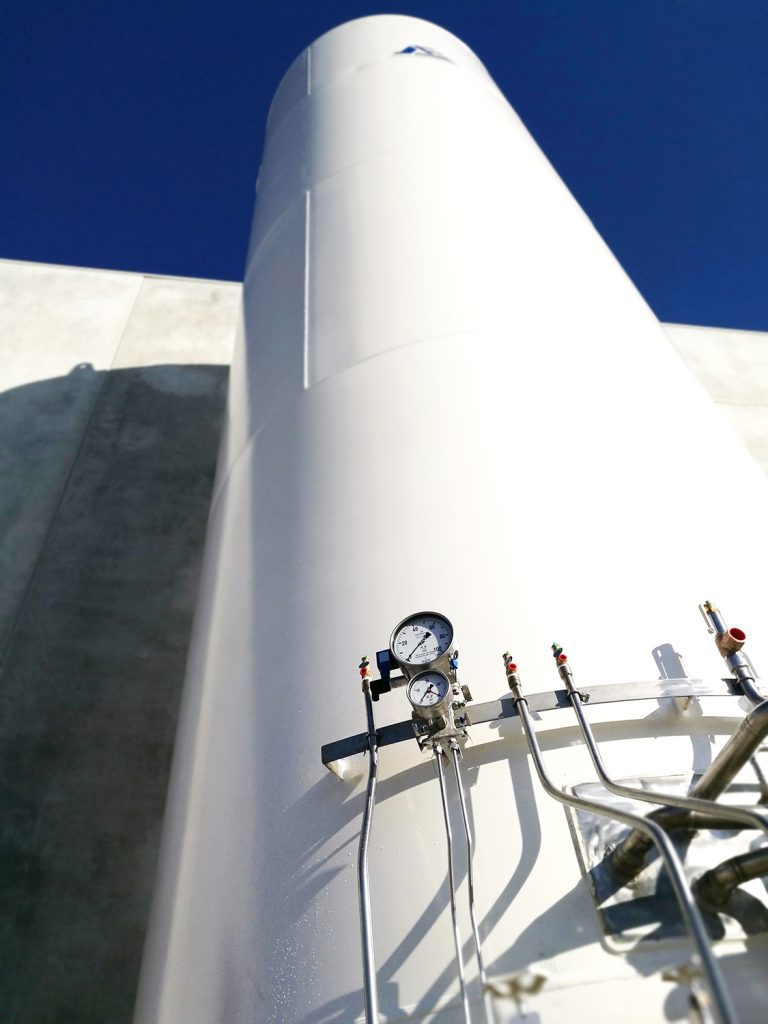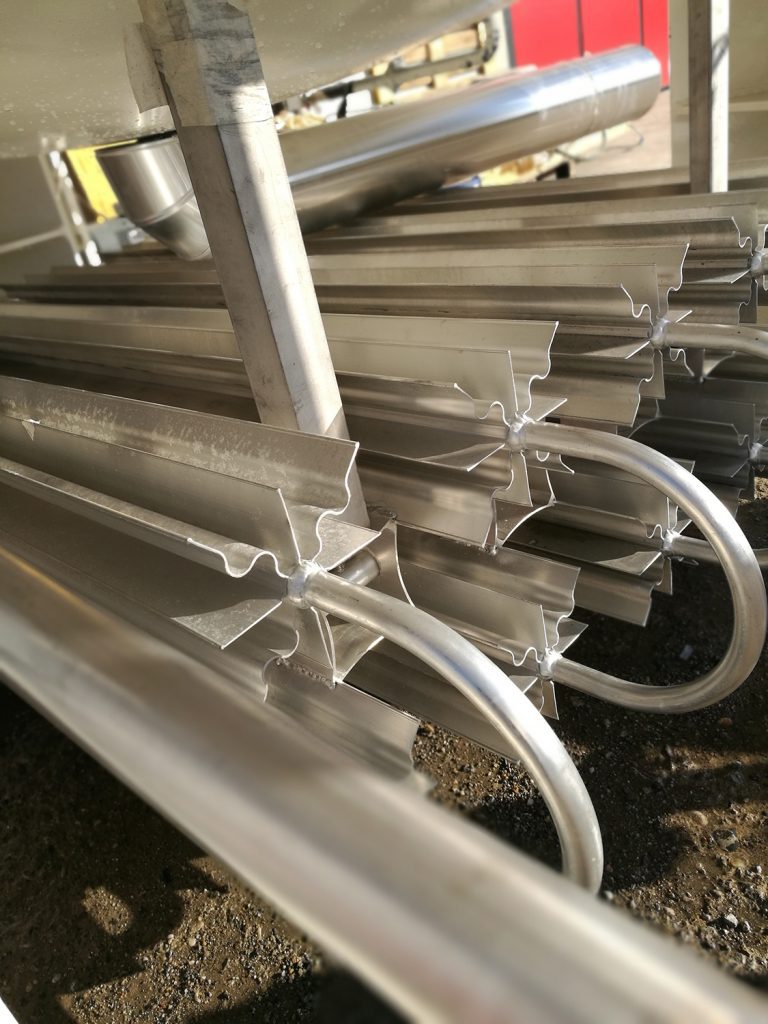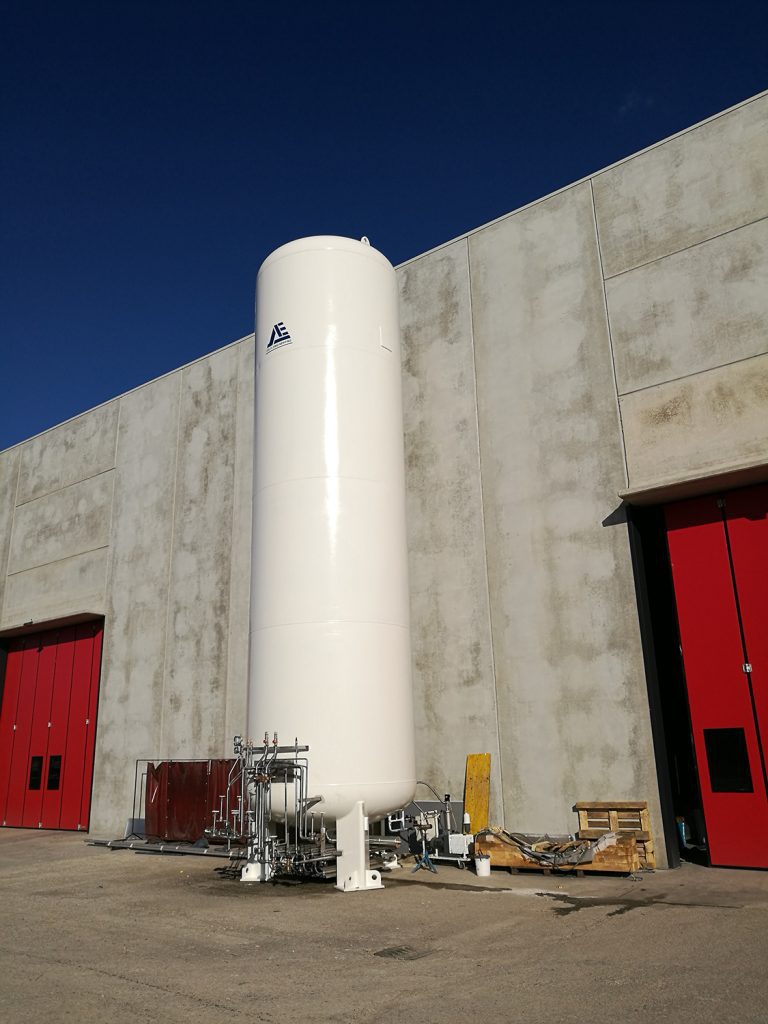CRYOGENIC ENGINEERED TANKS
STANDARD and TAYLOR MADE CRYOGENIC TANKS
Cosmec cryogenic tanks are based on a standard design as per specific application, or customized in accordance with client specifications, incorporating advanced design techniques such as FEA for stress analysis. To maximize reliability at the extremely low temperatures involved, thermal analysis for contraction effects at -196 °C is also carried out upon request.
Cryogenic tanks are designed according to AD 2000, EN 13458-2, ASME Code Section VIII Division 1/2. All other national pressure vessel codes can be followed depending on project location and client requirements.
Certification according to EC Directive PED 2014/68/EU, ASME VIII Div.1/2 CODE STAMPED can be provided. Cryogenic tanks are available in vertical or horizontal arrangement and can be used for LIN, LOX, LAR, LNG, CO2 and N2O.
Materials of construction include but are not limited to stainless steel for cryogenic inner vessels as well as low temperature carbon steel for foam insulated vessels. Outer vessels or vacuum jackets are fabricated from carbon steel or stainless steel (as an option) to provide vacuum insulation for the inner vessel.
Cosmec Cryogenic tanks are manufactured and subjected to stringent quality control procedures with the following testing activities, done as minimum, on all fabricated vessels:
- Full Hydrostatic testing for inner vessels;
- Helium leak testing to verify vacuum integrity of inner vessel jacket;
- Leak testing of all cryogenic valves and external piping;
- Cold shock testing of inner vessels with liquid nitrogen for nozzle and pipe integrity check.
Cryogenic Tanks are equipped with automatic pressure increase system (outer coil) to off-set any drop-in pressure that may take place when draining off gas or liquid. As an option, the cryogenic tanks can be delivered with a thermostat controlled electric heating element. Safety valves are designed to relieve over pressure inside tank. The system includes a two-way safety valve that allow for one tank to be isolated while maintenance or repair are carried out on the other one.

